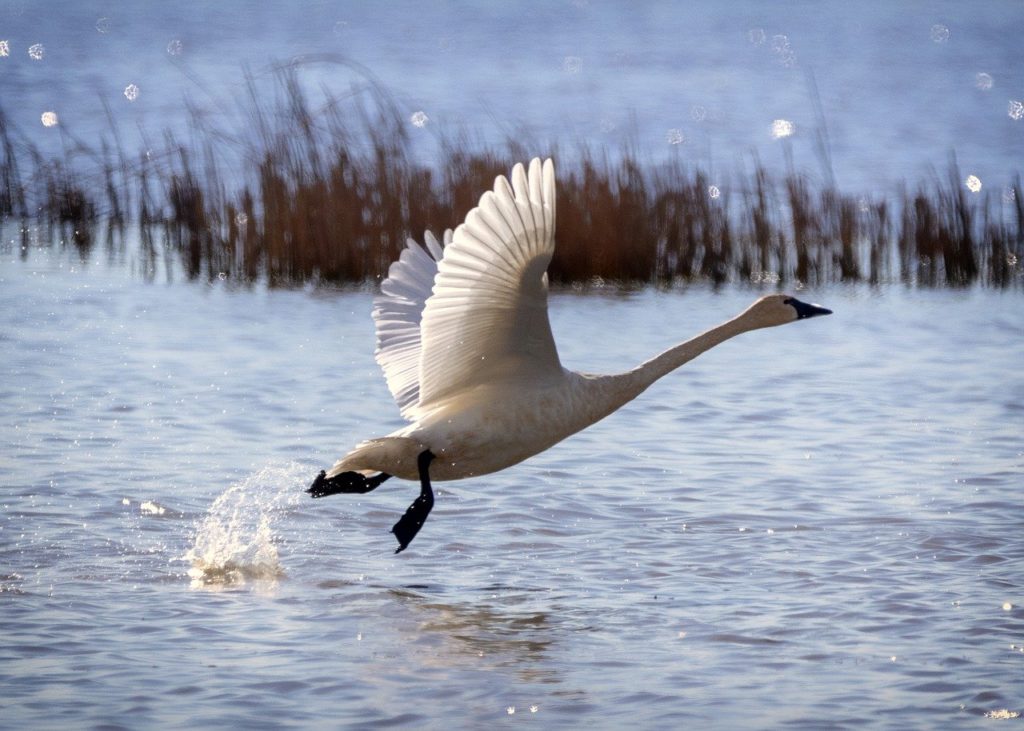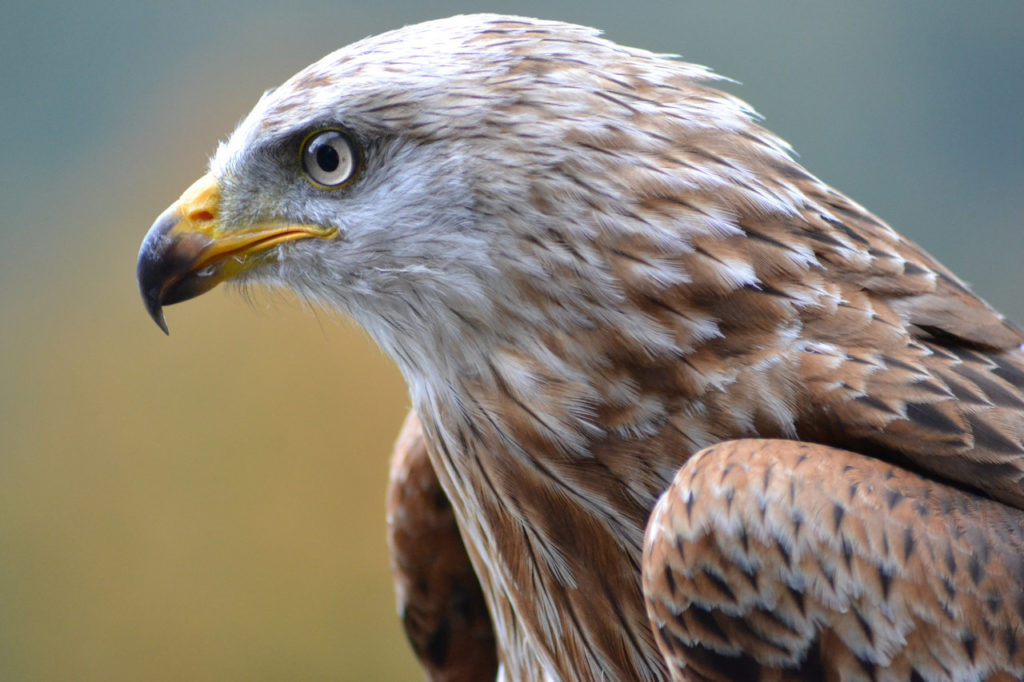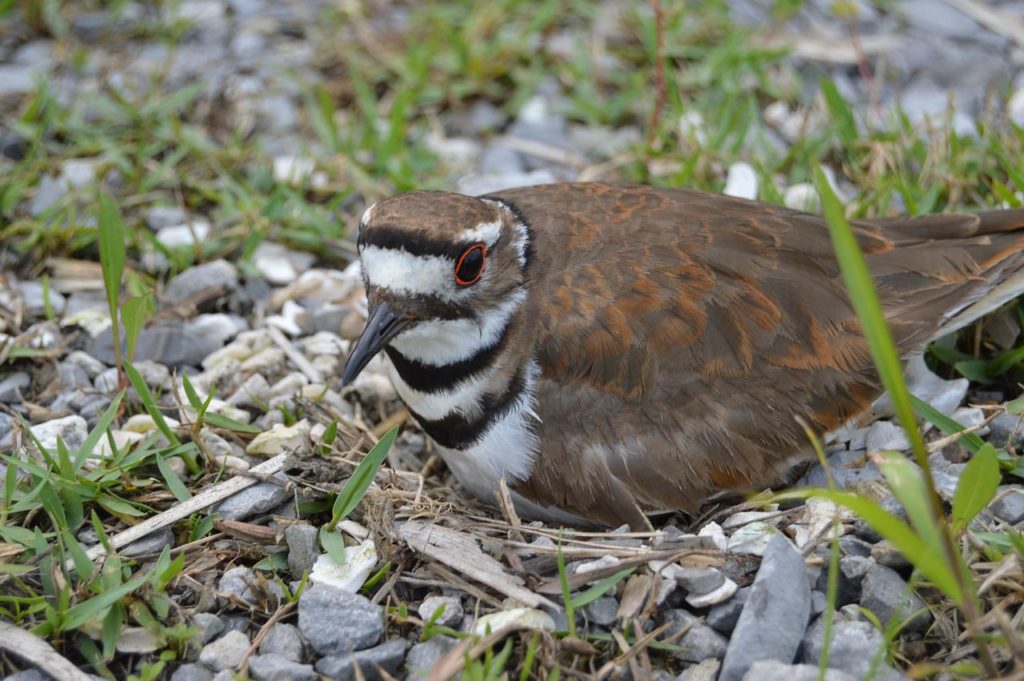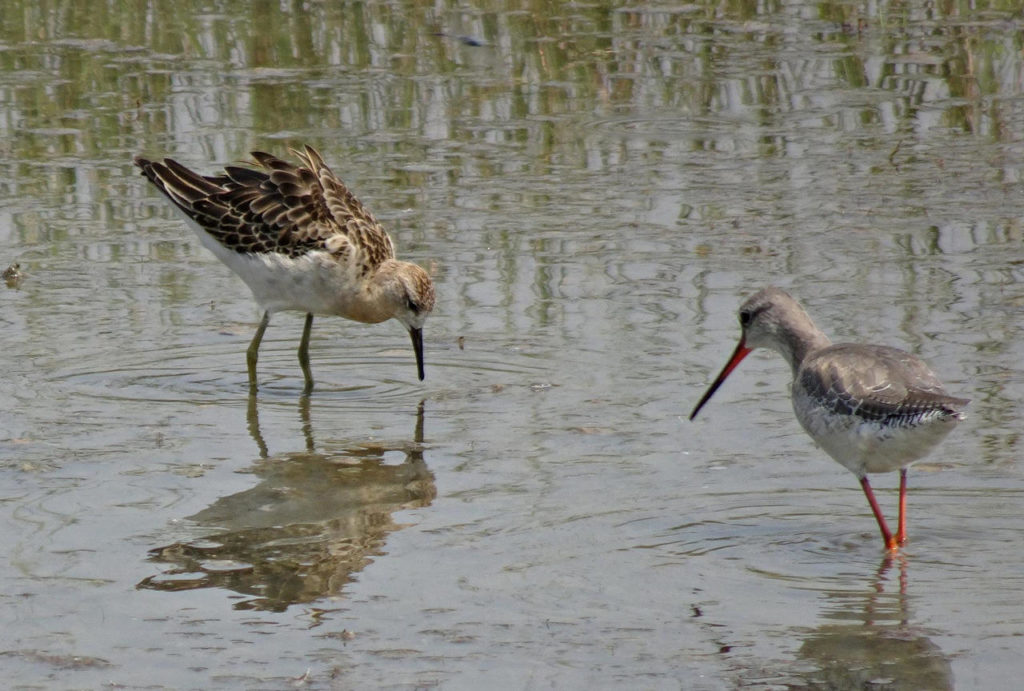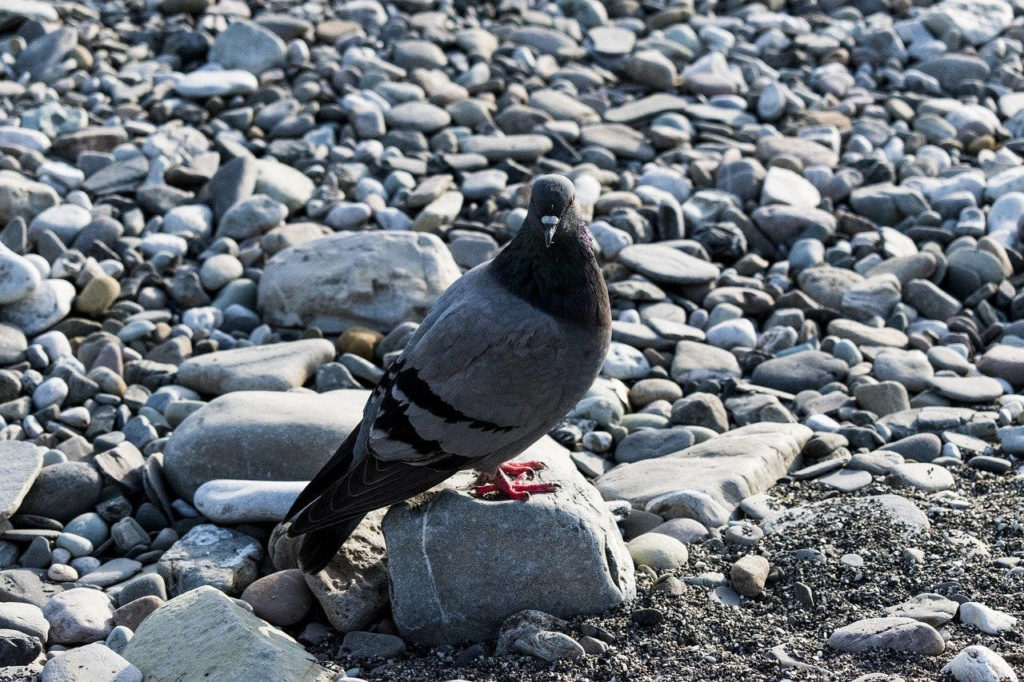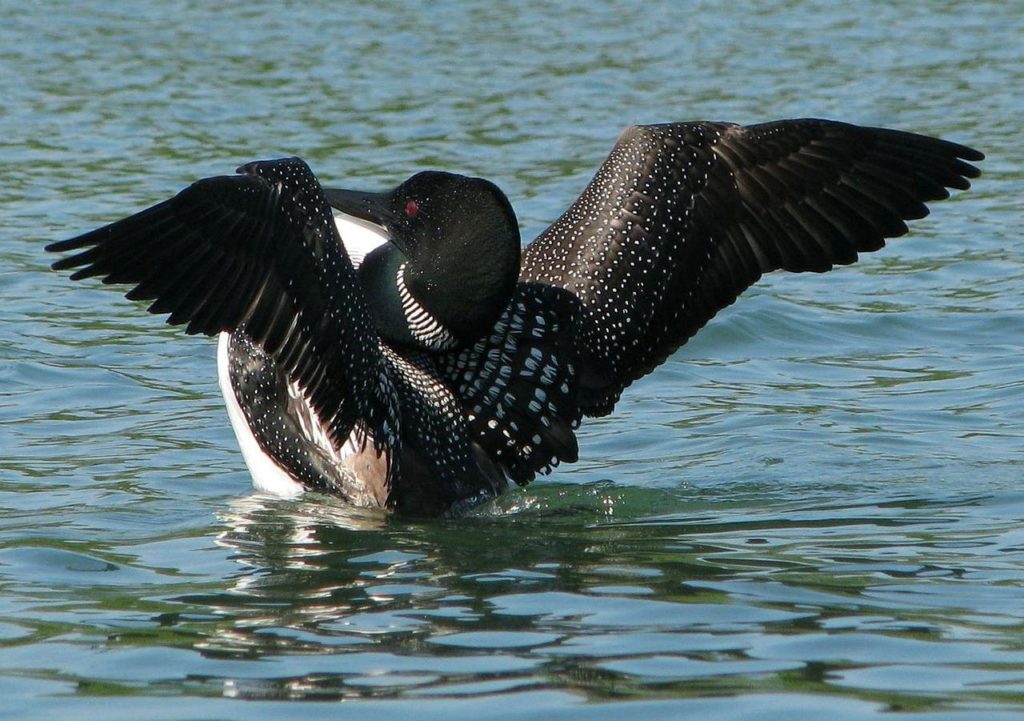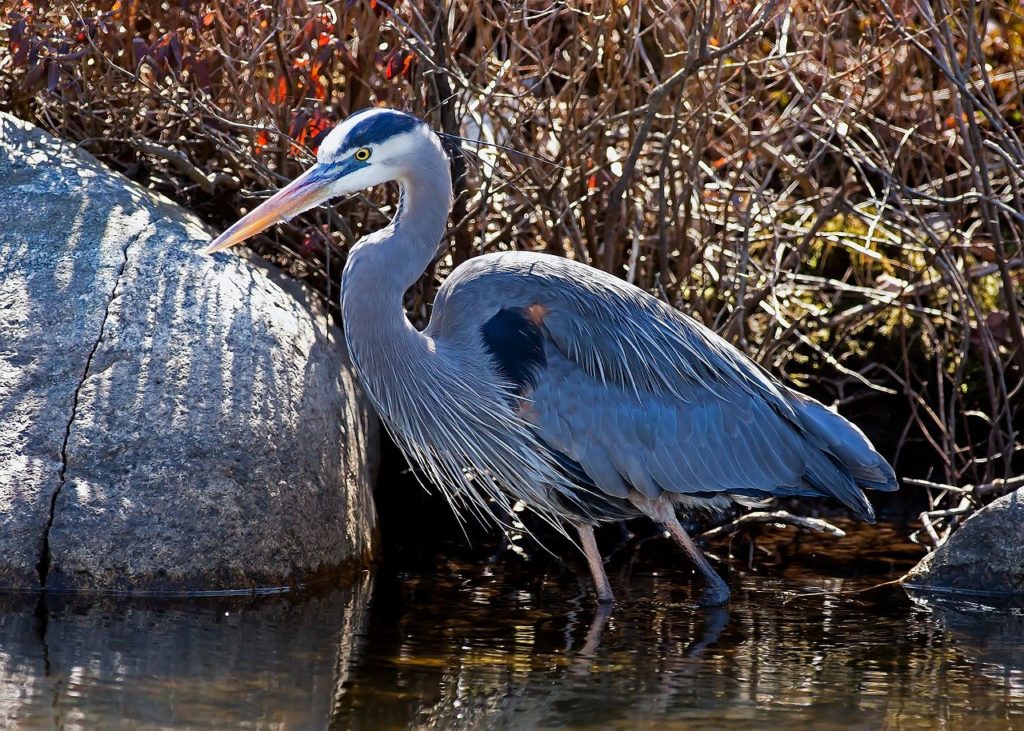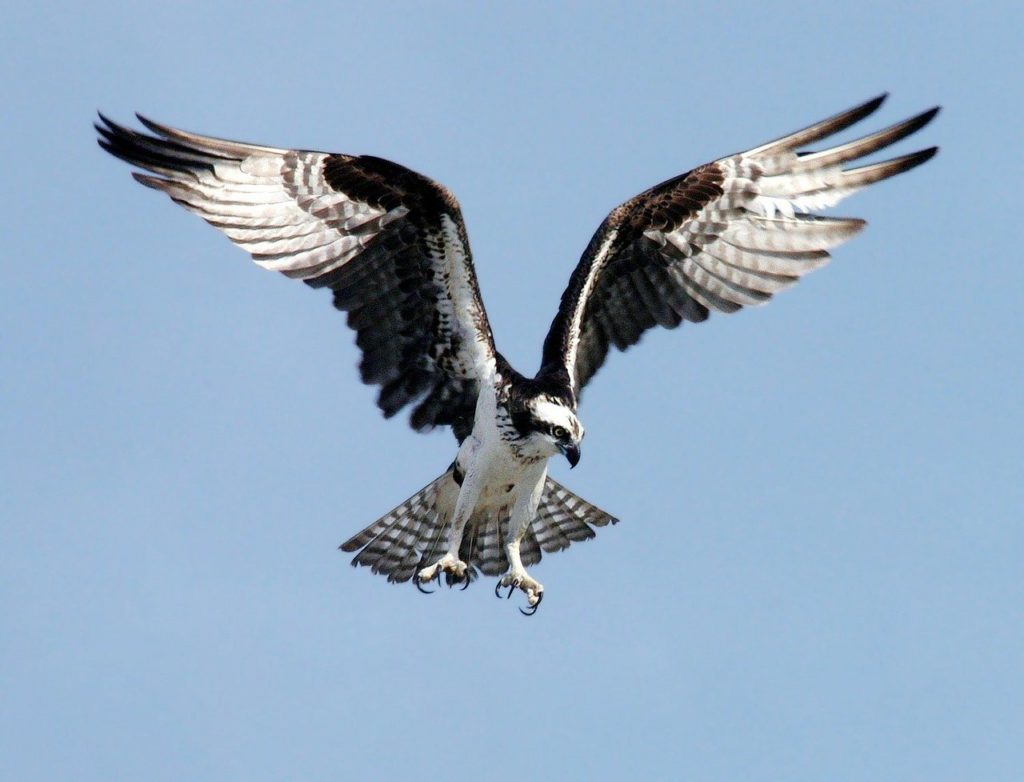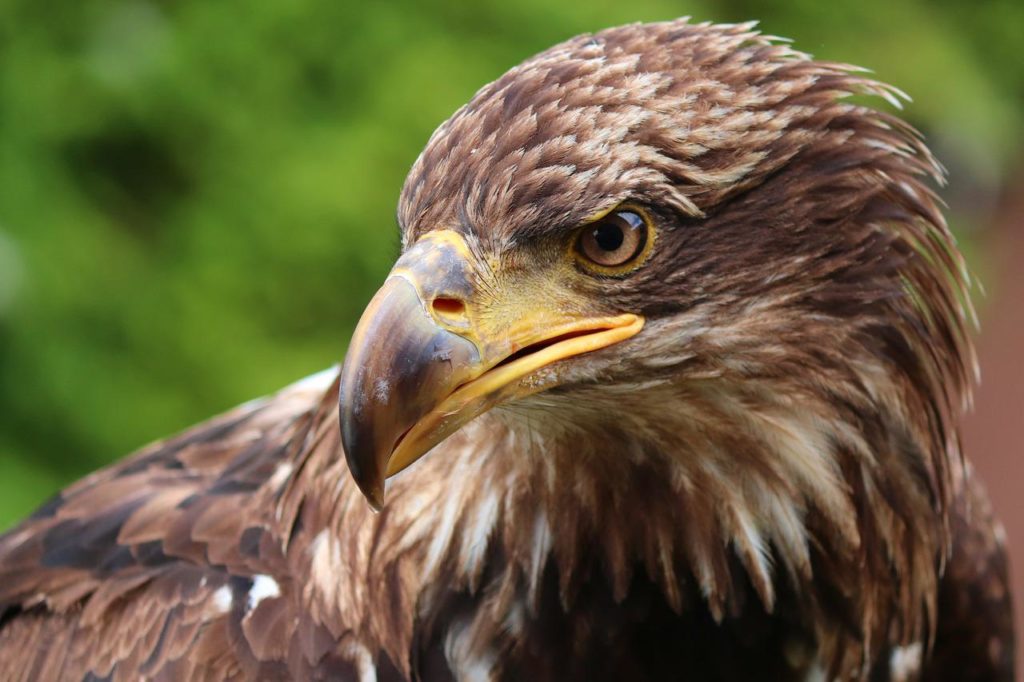Welcome to the first part of our three-part series covering a variety of bird species found in Glacier National Park. View part two and part three.
If you’re interested in four-legged wildlife, click here.
Trumpeter Swan (Cygnus Buccinator)
Coming from the Anatidae family, the Trumpeter Swan is considered the heaviest of all birds living in North America. These magnificent birds mate yearly between March and May at four to seven years old. Right after copulation, they start building their nest, taking two to five weeks for them to complete it. Trumpeter Swans mainly establish their nests on water-surrounded vegetal mounds. They are 55 to 63 inches long and weigh 21 to 31 lbs with a wingspan of 74 to 98 inches.
The majority of their body is white, with black legs and black bill. An immature trumpeter will appear grayish-brown. Trumpeter Swans are found among inland waters and on ice-free coasts. They can be seen between November and February in the morning or late afternoons.
White-Throated Swift (Aeronautes Saxatalis)
The White-Throated Swift is indigenous to the western part of North America and belongs to the Apodiformes family. From Northern California all the way to Southern British Columbia to their migrating communities.
While flying hundreds of feet above the ground, often riding one over another, it is still unknown whether they are mating or courting. White-Throated Swift are blackish brown in color and 3.5 to 9 inches long, with a firm body structure and long wings.
This social bird is often seen in mountains or hilly areas in Glacier National Park. You may also find it in manufactured structures. White-Throated Swifts are commonly seen in the early morning or late afternoons in the spring season.
Prairie Falcon (Falco Mexicanus)
This species belongs to the Falconidae family and native to western North America. It hunts a wide variety of birds and mammals, from sparrows to living beings similar to its own body weight.
The male falcon performs an aerial courtship to grab his mate’s attention and attract it to the nesting site. Prairie Falcons mostly choose the same nesting site every year and mate for life. If a male mate is killed, the female falcon will select another one to breed with.
The Prairie Falcon is approximately 16 inches long, 1.6 lbs. in weight, and extends its wings up to 40 inches. It is brownish in color, with dark patches under their wings. Females are generally larger than their male counterparts. Prairie Falcons choose grasslands and open hills to build nests throughout Glacier National Park. They are usually seen between January and July in the daytime.
Killdeer (Charadrius Vociferus)
The male generates a two-note call to attract his female mate. Sometimes, he will attract the female with sounds made by scraping at the ground as he flies within the mating area.
Killdeer weight only 0.2 lbs and is 9 to 11 inches in length. The upper parts of the Killdeer are brown with black and white patches on the head. The breast has two black bands, and the belly is white along with the rest of the body. Killdeer is usually found in golf courses, grassy lawns, and parking areas. You will usually see this bird during the day in March, April, and September but they are also seen at night when the moon is full or nearly so.
Spotted Sandpiper (Actitis Macularius)
Belonging to the Scolopacidae family, it is a small shorebird indigenous to North America.
Spotted Sandpipers start their breeding every year between May and August. The female birds build a breeding area in spring to attract male partners, which arrive at the site four days later.
The Spotted Sandpiper is 7 to 8 inches long and weighs 0.07 to 0.1 lbs. It has an orange bill with small yellowish legs. The breast is white with dark spots that disappear during winter. The back of the Spotted Sandpiper is a dark brownish shade.
They are found close to water reserves, e.g., shores, lakes, and ponds in Glacier National Park. They start nesting in June and you’ll typically see the young ones in the same month. These birds forage, bathe, and preen in the daytime.
Rock Pigeon (Columbia Livia)
Belonging to the Columbidae family, Rock Pigeons are also known as common pigeons or rock doves.
To attract a female pigeon, the male bird circles around his partner, inflates his throat, and bows. Both partners might preen each other. As a courtship gesture, the male pigeon grasps the bill of the female partner and regurgitates food.
They are approximately 12.5 inches in length. The color varies, but most rock pigeons have grayish-blue heads, grayish backs, and black-barred wings. They are found on rocky cliffs, railroad bridges, or other similar places. You can see them flying in the daytime all year round.
Common Loon (Gavia Immer)
Belonging to the Gaviidae family, the Common Loon is also known as the great northern diver. The male birds are considerably heavier compared to their female mates. As soon as the breeding season starts, Common Loons start living near water resources.
The female loon attracts the male partner by turning her white belly towards him, encouraging the male loon to perform copulation. Once complete, both partners head toward lakes and other water resources for a casual swim. The adult Common Loon has grayish-black upperparts, white underparts, a bluish or greenish neck, and a black head.
Common Loons are 27 to 35 inches long, and weigh between 3.5 and 18 lbs. They are usually found in ponds and lakes in Glacier National Park between April and early May, moreso in the daytime.
Great Blue Heron (Ardea Herodias)
From the Ardeidae family, this species is native to Central and North America.
Both male and female birds lower their heads to show they are interested in copulation. The male begins gathering nesting material and brings it to his female partner. Every nest results in three to five eggs. Herons weigh 4.6 to 5.5 lbs and are 38 to 55 inches long.
Heron’s are bluish-gray in shade, with a black stripe over their eyes for added distinction. The Great Blue Heron is mostly found near open water streams or rivers in Glacier National Park. Seen during both spring and summer, but most active early in the morning.
Osprey (Pandion Haliaetus)
Originating from the Pandionidae family, the Osprey is also referred to as a fish hawk, river hawk, or sea hawk.
Ospreys prefer to have one partner, and often mate for life. The male partner takes the responsibility of choosing a nesting site in areas close to water, sometimes a man-made structure, a cliff, or a dead tree. Both partners collect nesting material, but the female arranges it by herself.
The wingspan of an Osprey can reach 71 inches, and the length of the body may exceed 24 inches. The underparts and head are gray, whereas the upperparts have a brownish appearance. The Ospreys are found near the coast of lakes and rivers in Glacier National Park. If you want to see them, visit this park early in the morning between mid-March and September.
Golden Eagle (Aquila Chrysaetos)
From the Accipitridae family, Golden Eagles are one of the most popular birds of prey.
These birds are known to mate for life. Both male and female perform a courtship display. The male partner finds pieces of stones or rocks, drops it in the air, and catches it again before hitting the ground. He performs this action at least three times. Mating habits are a wonderful mix of steep diving and sky dancing.
Golden Eagles are 26 to 39 inches long and weigh 7.9 to 14.7 lbs. They are brown-colored birds with yellow feet and a light goldish-brown shade on the napes. An immature Golden Eagle has white markings and a whitish tail. This bird nests in large trees, high places, and on cliffs in Glacier National Park. You can see them during daytime all year round.


